Side Leg Exercises: Benefits and How To Tips for Seniors
Side leg exercises are a fantastic way to strengthen your lower body, targeting muscles you may not be working during other workouts.
While traditional leg exercises like squats and lunges work on quads, hamstrings, and glutes, these movements target the inner and outer thighs and hip adductor and abductor muscle groups.
Side leg exercises can be very beneficial for women over 60. Adding them to your workout routine can improve your balance, coordination, and flexibility, which helps you have better posture and reduces the risk of injury.
For me, I love them because they keep my saddlebags in check!
These exercises can also be modified to fit any fitness level.
So, whether you’re a fit senior looking to change up your game or someone just trying to get shapelier legs or get stronger to be more active, this can be a great exercise for you!
So, let’s look at the benefits and proper way to do side leg exercises.
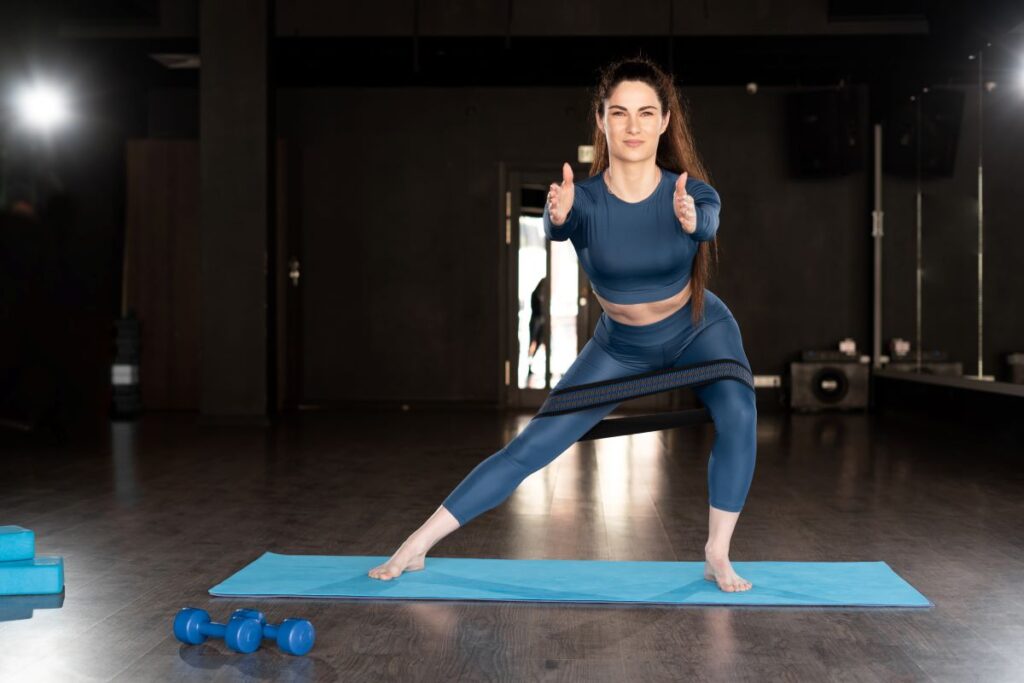
This post contains affiliate links. If you make a purchase using my link, I may earn a commission at no extra cost to you.
Benefits of Side Leg Exercises
Side leg exercises are an important part of lower body workouts,
and including them in your routine can provide several benefits.
1. Strengthens Muscles
You will find that these exercises target multiple muscle groups, especially your glutes, hip abductors, and inner thighs.
Strengthening these muscles is important for stability and can improve your performance in all workout routines and daily activities.
2. Improves Balance
Your body learns to maintain stability as you perform side leg exercises.
This is beneficial for better balance and coordination, reducing your risk of falls.
3. Enhances Flexibility
By doing this exercise regularly, you improve your hip joint mobility.
Moving your legs through a full range of motion strengthens and stretches the muscles, improving flexibility.
4. Helps with Symmetry
Side leg workouts can help correct muscular imbalances.
Almost everyone has one side that is weaker than the other.
These exercises can help even out the strength on both sides of your body.
5. Supports Core Strength
Engaging your core muscles is necessary when performing side leg lifts or raises.
This unintentionally works your abdominal muscles, providing the added benefit of building a strong core.
6. Optimizes Fat Burn
These workouts benefit those looking to sculpt their lower body.
They can help burn calories, which, combined with a healthy diet, can lead to fat loss around the thighs and hips.
You know the saddlebags!
Side Leg Exercise Fundamentals
Before diving into side leg workouts, you have to understand the basics of proper form to get the most out of the exercises and minimize your risk of injury.
Proper Form Tips and Technique
To perform side leg exercises correctly, engage your core and keep a straight spine throughout the movement.
Your lifting leg should move smoothly and be controlled – don’t just sling it back and forth.
Breathing and Posture
Your breathing should be steady and synchronized with the movements.
Inhale as you prepare to lift your leg, and exhale as you do the lifting.
Popular Side Leg Exercises
Side leg exercises are a great way to strengthen the muscles around your hips and thighs.
Standing Side Leg Raises
This exercise focuses on the abductor muscle group on your outer thigh and glutes.
To do this exercise:
- Stand up straight with your hands on your hips, looking forward.
- Lift your right leg out to the side with the foot flexed.
- Avoid lifting your leg too high.
- Keep the upper body stable and in balance.
- Then, lower the leg back to the starting position and repeat for 10 reps.
- Switch and repeat with the left leg.
If you have difficulty doing this exercise without leaning to the opposite side, try standing to the side or behind a sturdy item, such as a chair, to use as support.
For more resistance, place a resistance band above your ankles.
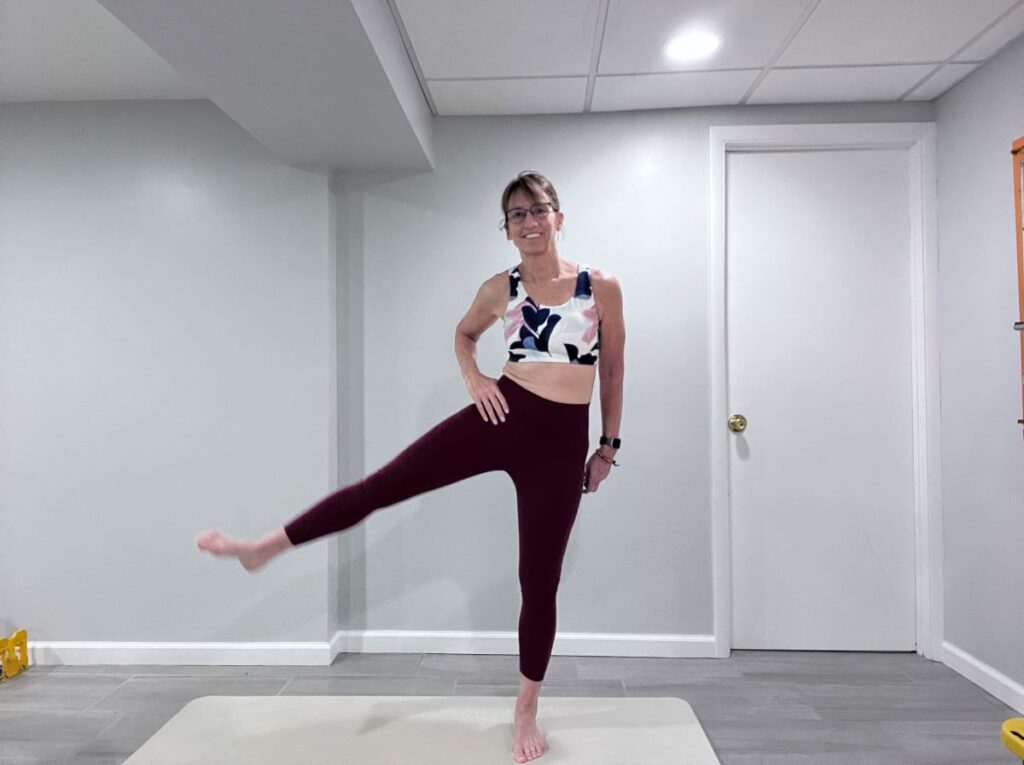
Side Lunges
Side lunges target your inner and outer thighs, glutes, and quadriceps.
To perform them:
- Stand with your feet shoulder-width apart.
- Step to the right with your right foot.
- Bend your right knee, pushing your hips back.
- Keep your left leg straight.
- Return to the starting position and repeat on the other side.
To increase the intensity, add a free weight to the exercise.
Lateral Leg Raises
Lateral raises focus on the abductor muscle group on your outer thigh and glutes.
To do lateral leg raises:
- Lie on your side with legs stacked.
- Raise your upper leg while keeping it straight.
- Pause at the top before slowly lowering it down.
- Repeat and switch sides after a set.
For a bigger challenge, place a resistance band above your ankles.
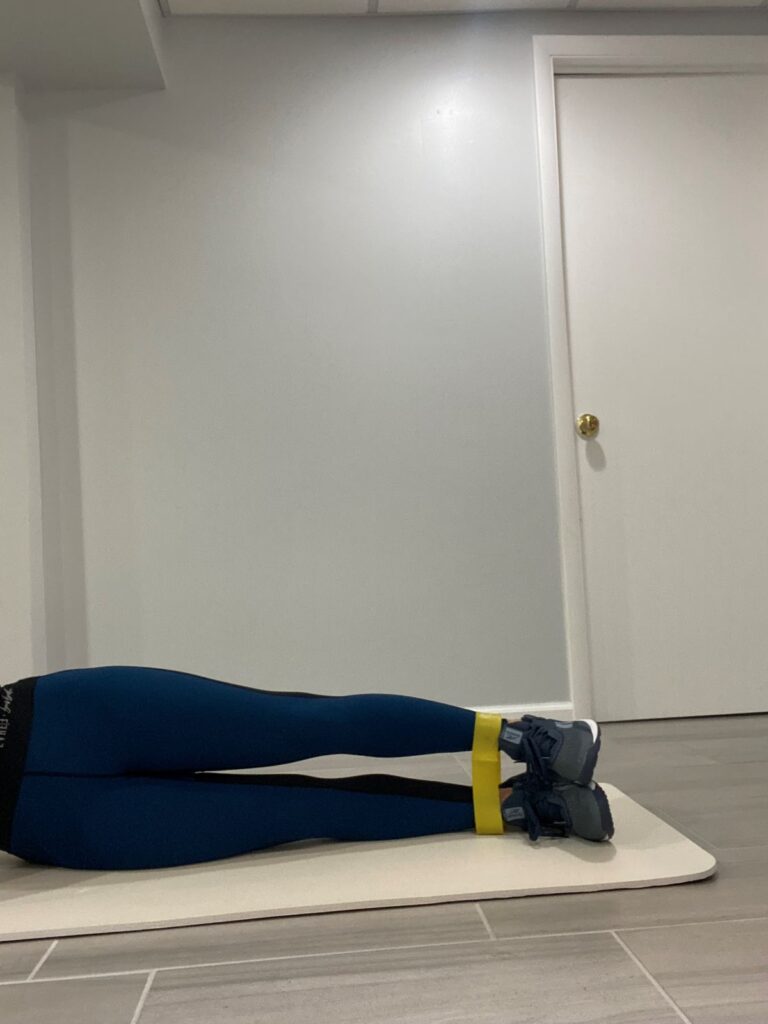
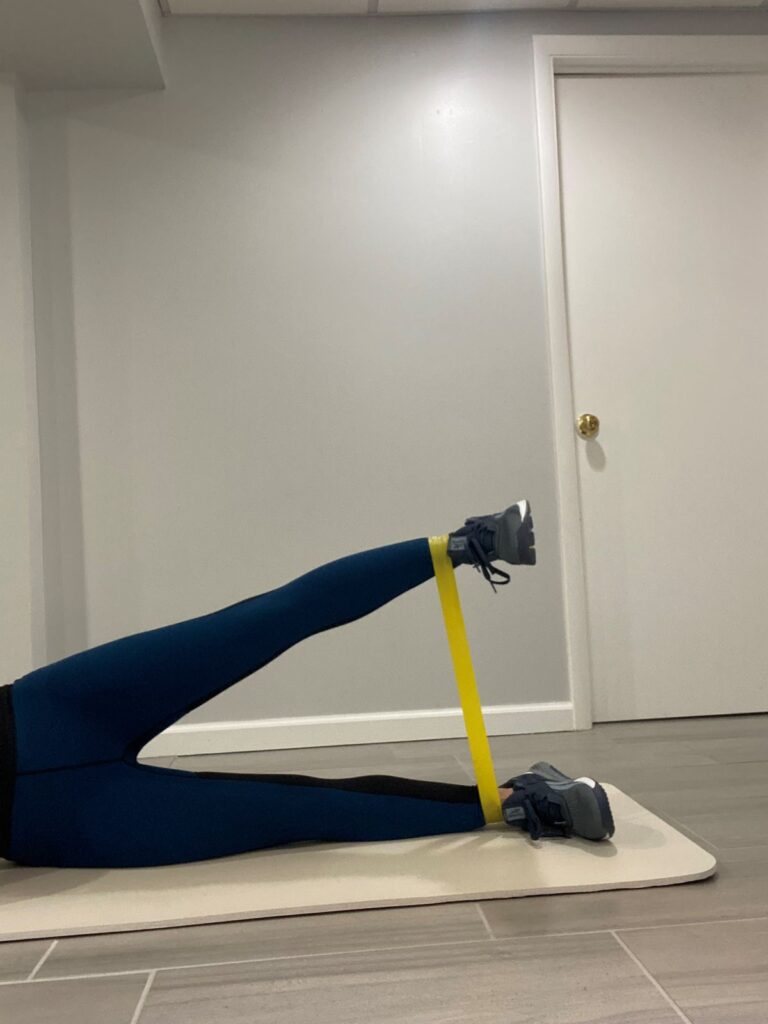
Fire Hydrants
This side leg lift exercise strengthens your obliques, glutes, and hip flexor muscles.
To perform fire hydrants:
- Begin by getting on your hands and knees
- Lift your right leg out to the side with your knee bent.
- Hold for a few seconds, then lower.
- Do a set of 10.
- Switch to the other side after your set.
For more of a challenge, place a resistance band above your knees.
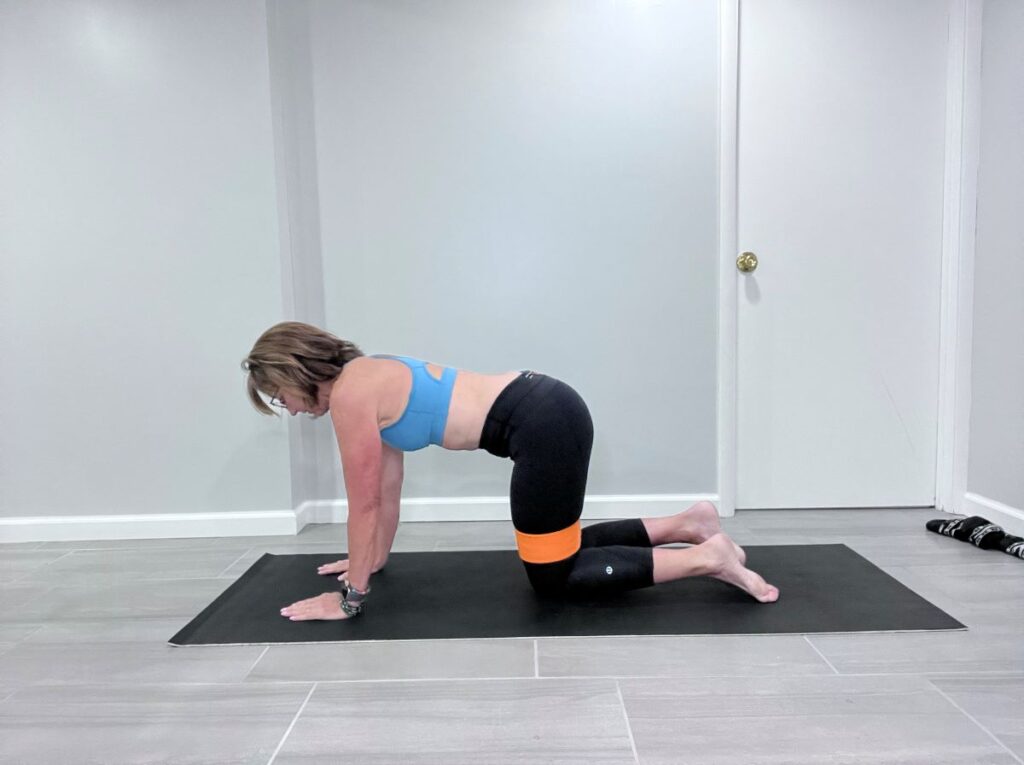
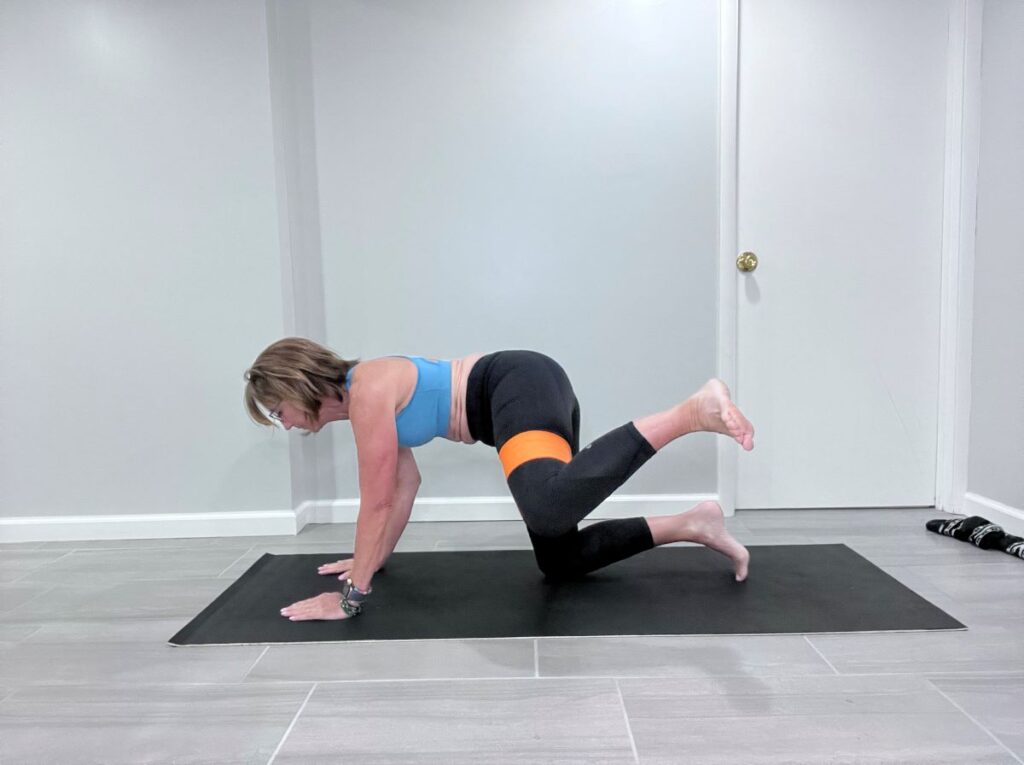
Warm-Up and Cool-Down Routines
Before you start your side leg exercises, you should warm up to prepare your muscles and joints for the activity.
This typically involves:
- Cardio: 5-10 minutes of light cardio (jogging in place or jumping jacks)
- Dynamic Stretches: Leg swings, walking lunges, or side lunges
Cooling down after your workout is equally important to slowly bring your heart rate back to normal and decrease muscle stiffness.
Spend at least 5-10 minutes on:
- Static stretches: Hold each stretch for at least 20-30 seconds without bouncing
- Mild cardio: A slow walk or gentle pedaling on a stationary bike
Recognizing Overexertion Signs
Listening to your body helps prevent injury by not overworking your muscles.
Be aware of these signs:
- Muscle fatigue: When muscles start to fatigue, movements can become sloppy, making it difficult to maintain proper form.
- Sharp pain: Different from muscle burn, sharp or sudden pain is a clear signal to stop exercise. If it persists, you may want to seek medical advice from your healthcare provider.
- Excessive shortness of breath: Indicates that you may need to rest and lower the intensity
Addressing Common Mistakes
Avoiding typical mistakes can significantly reduce the risk of injury during side leg exercises.
Pay attention to:
- Form: Always keep your core engaged, align your hips correctly, and move your legs in a controlled manner.
- Range of motion: Don’t raise your leg higher than your flexibility allows.
- Speed: Doing the exercises too quickly can lead to loss of form and possible strain. Slow, controlled movements are more effective.
Exercise Selection
Select from a variety of exercises to target different muscle groups:
- Side Leg Lifts: Focus on outer thigh and hip abductors.
- Side Lunges: Work the inner and outer thighs at the same time.
- Fire Hydrants: Use resistance bands to strengthen the hip abductor muscles.
Gradual Progression
- Start with body weight before including resistance.
- Add ankle weights or resistance bands as you build strength.
By including side leg exercises in your fitness routine, you’re working towards a more balanced leg workout and paying more attention to often-neglected muscle groups.
Remember to start slowly and listen to your body to avoid injury.
Doing Side Leg Exercises
Side leg raises are a simple yet effective exercise that targets the muscles of the inner and outer thighs, hips, and glutes.
They can be easily included in any workout routine and performed almost anywhere, requiring no equipment.
Consistent practice of side leg raises can help improve muscle tone and hip stability and improve overall lower body strength.
Additionally, they can help with injury prevention by supporting the muscles around the hip joint.
Whether you’re an active senior looking to improve performance or someone looking to maintain a healthy fitness level, side leg raises are an exercise worth considering.
Remember to perform them with proper form and gradually increase the intensity to maximize their benefits while minimizing the risk of injury.
